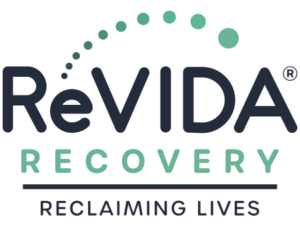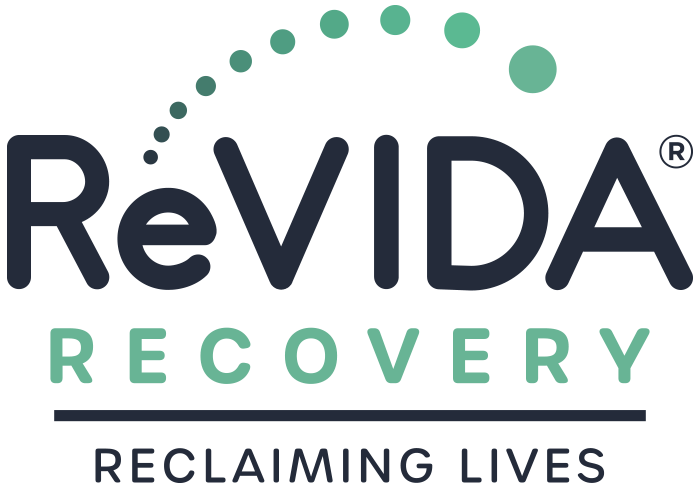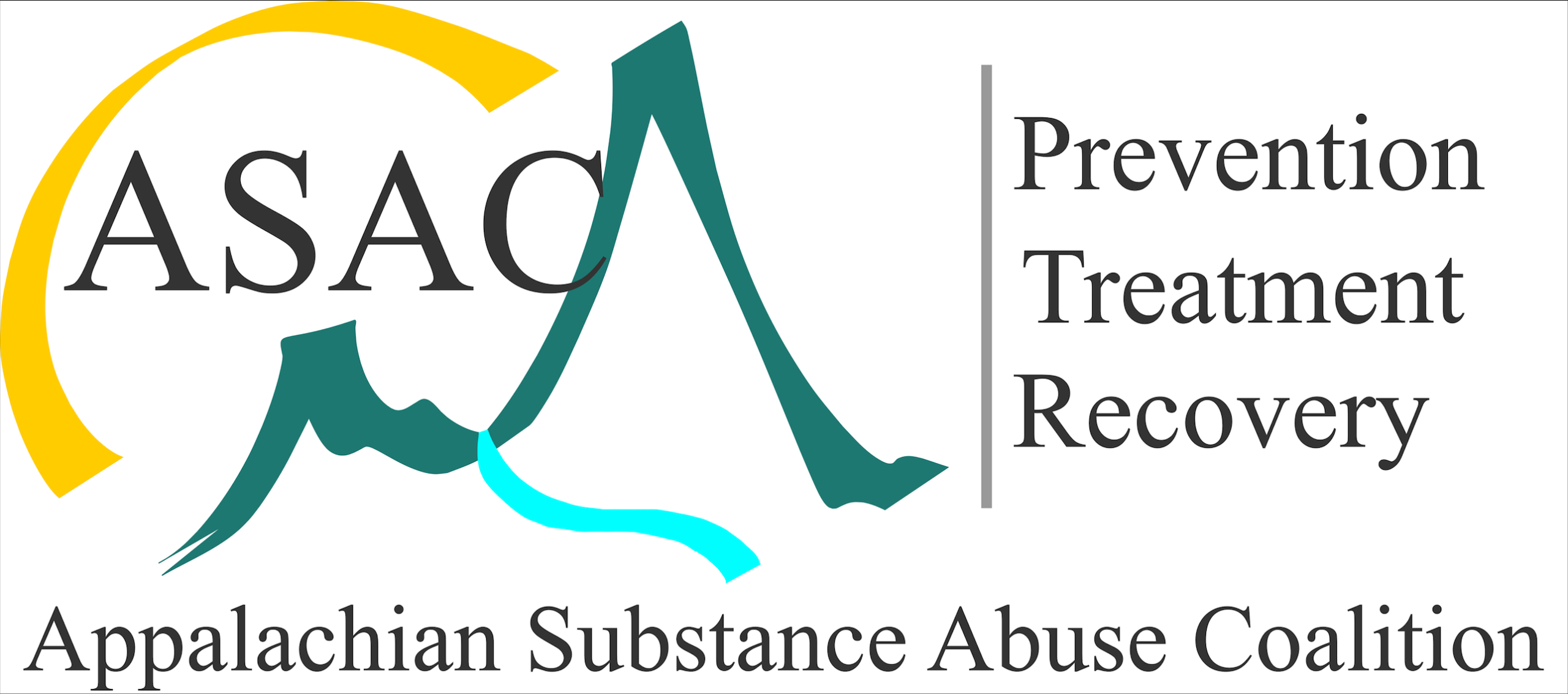Buprenorphine (Suboxone®) is a medication that can provide much relief to those wanting to overcome opioid dependency.
If you’re taking buprenorphine (Suboxone®), you may wonder: What are some of the reasons a person may want to taper off buprenorphine (Suboxone®)? How do I taper off buprenorphine (Suboxone®)?
If you’re less familiar with buprenorphine (Suboxone®), you may have the following questions: What is buprenorphine (Suboxone®)? What are the signs and symptoms of opioid use disorder? Where can I or a loved one get buprenorphine (Suboxone®) treatment?
Read on to learn more about what buprenorphine (Suboxone®) is, the safety guidelines for taking it, the possible reasons to stop taking it, how to taper off of buprenorphine (Suboxone®), possible withdrawal symptoms that may occur while tapering, and buprenorphine (Suboxone®) treatment available in Tennessee at ReVIDA Recovery®.
Table of Contents
What Is Buprenorphine (Suboxone®)?
Buprenorphine (Suboxone®) is a medication used to treat opioid use disorder. Buprenorphine (Suboxone®) relieves withdrawal symptoms from opioid drugs while also reducing cravings for opioids.
Buprenorphine (Suboxone®) is available in an oral film or tablet form. Buprenorphine (Suboxone®) is taken once opioid withdrawal symptoms have started, or when a person is no longer taking opioid drugs.
According to the Indian Health Service, buprenorphine (Suboxone®) is a type of partial opioid agonist. A partial opioid agonist binds to opioid receptors but activates them less strongly than other full agonist opioids.
Full agonist opioids activate or turn on the opioid receptors in the brain fully, which results in a person experiencing the full opioid effect. Examples of full agonist opioids are heroin, oxycodone, methadone, hydrocodone, morphine, and opium.
Ceiling Effect of Buprenorphine (Suboxone®)
According to a 2020 Buprenorphine Report by the Tennessee Department of Health-Office of Informatics & Analytics, buprenorphine (Suboxone®) is effective due to the ceiling effect of the medication.
The ceiling effect of buprenorphine (Suboxone®) means that taking more and more buprenorphine (Suboxone®) will not produce a greater effect. The ceiling effect lowers the likelihood of misuse and suboxone overdose. The ceiling effect also dulls the euphoric (pleasurable) effects of any other opioids consumed.
Safety Guidelines for Taking Buprenorphine (Suboxone®)
According to the University of Arkansas for Medical Sciences, people taking buprenorphine (Suboxone®) should follow these safety guidelines:
- Do not take other medications with buprenorphine (Suboxone®) without first consulting your physician.
- Do not use illegal drugs, drink alcohol, or take sedatives, tranquilizers, or other drugs that slow breathing while taking buprenorphine (Suboxone®).
- Mixing large amounts of other medications with buprenorphine (Suboxone®) could lead to overdose or death.
- Do make sure that a physician monitors any liver-related health issues you may have.
Weaning Off The Medication Buprenorphine (Suboxone®)
According to information from the University of Nevada, Reno School of Medicine, a general rule for tapering off buprenorphine (Suboxone®) is pacing the taper schedule with the body’s ability to adapt to each decrease.
An additional rule is that a dose decrease of 25% of buprenorphine (Suboxone®) separated by at least 10 days is considered by many to be a tolerable or manageable tapering schedule.
The midpoint of the tapering schedule is generally considered to be 2mg daily of buprenorphine (Suboxone®). After this midpoint, the pace of the taper slows.
The tapering schedule to reduce or stop buprenorphine (Suboxone®) may vary from person to person. It is always best to consult with your healthcare prescriber first before tweaking or changing your current dosage schedule. The healthcare prescriber can determine a healthy and safe treatment plan to meet your unique needs and goals.
Keeping in mind the recommendation to consult with your healthcare prescriber first before changing your current medication schedule, a sample schedule for tapering off of buprenorphine (Suboxone®) with an initial dose of 16 mg/day may be:
- Day 1 of tapering: immediate dose decrease of 25%, which reduces the dose to 12 mg/day
- Day 6: reduce dose from 12 mg/day to 8 mg/day
- Day 11: 4 mg/day
- Day 16: 2 mg/day
- Day 24: 1.50mg/day
- Day 31: 1mg/day
- Day 39: 0.75mg/day
- Day 45: 0.50mg/day
A helpful suggestion for tapering is taking buprenorphine (Suboxone®) first thing in the morning as blood levels are lowest at night during sleep. Also, cut the buprenorphine (Suboxone®) strips and measure out the correct portions for the taper in advance. This will help you stay on track.
Managing Withdrawal Symptoms While Tapering Off Buprenorphine (Suboxone®)
While tapering from buprenorphine (Suboxone®), there may be withdrawal symptoms that occur, such as hot and cold flashes, fatigue or feeling tired, myalgia (muscle soreness and achiness), physical and mental cravings, diarrhea, sweating, nausea and vomiting, insomnia (trouble staying or falling asleep), and negative mood changes (irritability, moodiness, depression, anxiety, suicidality).
To cope with suboxone withdrawal symptoms, it may be helpful to exercise regularly, take regular hot showers or warm baths, maintain a healthy diet and stay hydrated, journal, meditate, listen to music, and go for mindful walks outside.
Consult with your healthcare provider to see if over-the-counter medications (acetaminophen, Pepto-Bismol, Tums, vitamins), ginger ale, or other natural remedies (lemon balm, magnolia root) may help you to cope with withdrawal symptoms.
What Is Opioid Addiction (Opioid Use Disorder)?
According to a brochure titled “The Facts About Buprenorphine,” published by the Substance Abuse and Mental Health Services Administration, signs of opioid dependency include craving and loss of control. Craving occurs when the mind develops an overwhelming desire for opioid drugs. Loss of control happens when it becomes harder to say no to using opioid drugs.
Certain people are at higher risk of developing an opioid dependency because of their genes, temperament or personality, or personal situation.
There is hope that can be found in opioid use disorder treatment. With opioid use disorder treatment, a person can change unhealthy thinking patterns into more healthy, helpful thinking patterns. Opioid use disorder treatment also helps a person address life issues (feelings of low self-worth, difficult situations at work or home, or spending time with people who use drugs) that may be further contributing to the disorder.
What Are the Common Signs of Opioid Addiction (Opioid Use Disorder)?
According to Johns Hopkins Medicine, the common signs of opioid use disorder include the following:
- The inability to control opioid use
- Uncontrollable cravings
- Drowsiness
- Changes in sleep habits
- Weight loss
- Frequent flu-like symptoms
- The flu-like symptoms may include nausea; vomiting; sweating; shaky hands, feet, or head; or large pupils (black centers of eyes)
- Decreased libido or sex drive
- Lack of hygiene or uncleanliness
- Changes in exercise habits
- Isolation or spending time away from family or friends
- Stealing from family, friends, or businesses
- New financial difficulties
How Common Is Opioid Use Disorder in Tennessee?
According to data from the 2019 National Survey on Drug Use and Health
and the National Survey of Substance Abuse Treatment Services, among people 12 or older in Tennessee, the yearly average percentage of opioid use disorder in the past year did not significantly change from 2015 to 2019.
From 2017 to 2019, the yearly average occurrence of past-year opioid use disorder in Tennessee was 0.9% (or 50,000 people), which was similar to both the regional average (0.8%) and the national average (0.7%).
How Common Are Deaths Related To Opioids in Tennessee?
According to the Tennessee Department of Health, from 2015 to 2019, in Tennessee, the rates of all drug overdose deaths increased, regardless of race. The number of heroin-related overdose deaths increased from 205 to 380.
Also, from 2015 to 2019, the number of overdose deaths involving fentanyl increased from 169 to 1,087. Opioid overdose deaths continued to increase in Tennessee through 2019, and most involved more than one contributing drug.
From 2018 to 2019, 51 counties in Tennessee reported an increase in the number of opioid-related overdose deaths.
Buprenorphine (Suboxone®) Treatment at ReVIDA Recovery®
Based on a 2020 Buprenorphine Report by the Tennessee Department of Health Office of Informatics & Analytics, there are 26 counties in Tennessee without a publicly listed buprenorphine provider. ReVIDA Recovery® is filling in the gaps in care in Tennessee by being a buprenorphine (Suboxone®) treatment provider.
ReVIDA Recovery® helps Tennesseans that are living with dependency on drugs such as heroin, oxycodone, hydrocodone, morphine, OxyContin, Percocet, Lortab, Roxicodone, and fentanyl.
ReVIDA Recovery® offers medication-assisted treatment (MAT) using medications such as buprenorphine (Suboxone®). Buprenorphine (Suboxone®) helps people living with opioid use disorder to curb their drug cravings and live a healthier lifestyle. Our MAT is supervised by our professional team of physicians, licensed therapists, certified counselors, care coordinators, and peer recovery specialists.
ReVIDA Recovery® also offers individual and group therapy, education classes, and 12-step meetings. The Behavioral Healthcare Team includes licensed therapists, certified counselors, care coordinators, and peer recovery specialists.
Counseling can help a person identify and process through triggering events and trauma that may have led to opioid dependency. In counseling, a person can develop healthy coping strategies to prevent future relapse and enjoy a life in recovery. It takes time to work through the hard emotions, challenging behaviors, and unhealthy thought patterns that may have contributed to the problem. Our caring and knowledgeable therapists at ReVIDA Recovery® are here to listen and assist.
Potential Patients Can Reach Out to ReVIDA Recovery® Today
ReVIDA Recovery® offers buprenorphine (Suboxone®) treatment and counseling to aid in overcoming opioid use disorder. Our professional team is here to assist you with our knowledge, experience, and most importantly our passion for helping people achieve recovery.
If you or your loved one is living with opioid use disorder, don’t delay getting the treatment that you or they need. Please call ReVIDA Recovery® today at (844) 972-4673.
FAQs: Information About How To Taper Off Suboxone:
How long does it take to get off of Suboxone?
It depends on the tapering schedule followed. Always check with your healthcare prescriber before changing your current medication schedule, but as a rough example, tapering off a 16mg/day dose would take over 45 days. According to information from the University of Nevada, Reno School of Medicine, it will take 2 to 3 days to clear buprenorphine (Suboxone®) after the last dose.
Is 4 mg of Suboxone a lot?
According to the prescribing information, the dosage strengths for a sublingual film of buprenorphine (Suboxone®) is: buprenorphine 2 mg/ naloxone 0.5 mg, buprenorphine 4 mg/ naloxone 1 mg, buprenorphine 8 mg/ naloxone 2 mg, and buprenorphine 12 mg/ naloxone 3 mg. Thus, 4mg of buprenorphine (Suboxone®) would be about an average dosage strength.
What happens if you run out of Suboxone?
If you are running out of buprenorphine (Suboxone®), it is best to consult with your healthcare provider to develop an appropriate action plan until your next refill. Your healthcare provider may suggest cutting films if you have a few remaining doses of buprenorphine (Suboxone®) left. Your healthcare provider may also suggest scheduling an appointment to discuss this issue further as they may be able to adjust your next prescription dosage to better meet your needs and to avoid running out of medication in the future.
Can you take half a Suboxone?
It is best to follow the buprenorphine (Suboxone®) prescription given by your healthcare provider. If you are following a tapering schedule that you developed with your healthcare provider, the recommendation may be to take half of a buprenorphine (Suboxone®) strip.
What happens if I miss a day of Suboxone?
According to the National Alliance on Mental Illness (NAMI), if a person misses a dose of oral buprenorphine (Suboxone®), they should take it as soon as they remember unless it is closer in time to when the next dose is usually taken. NAMI recommends that people not double their next dose of buprenorphine (Suboxone®) or take more than what is prescribed.










